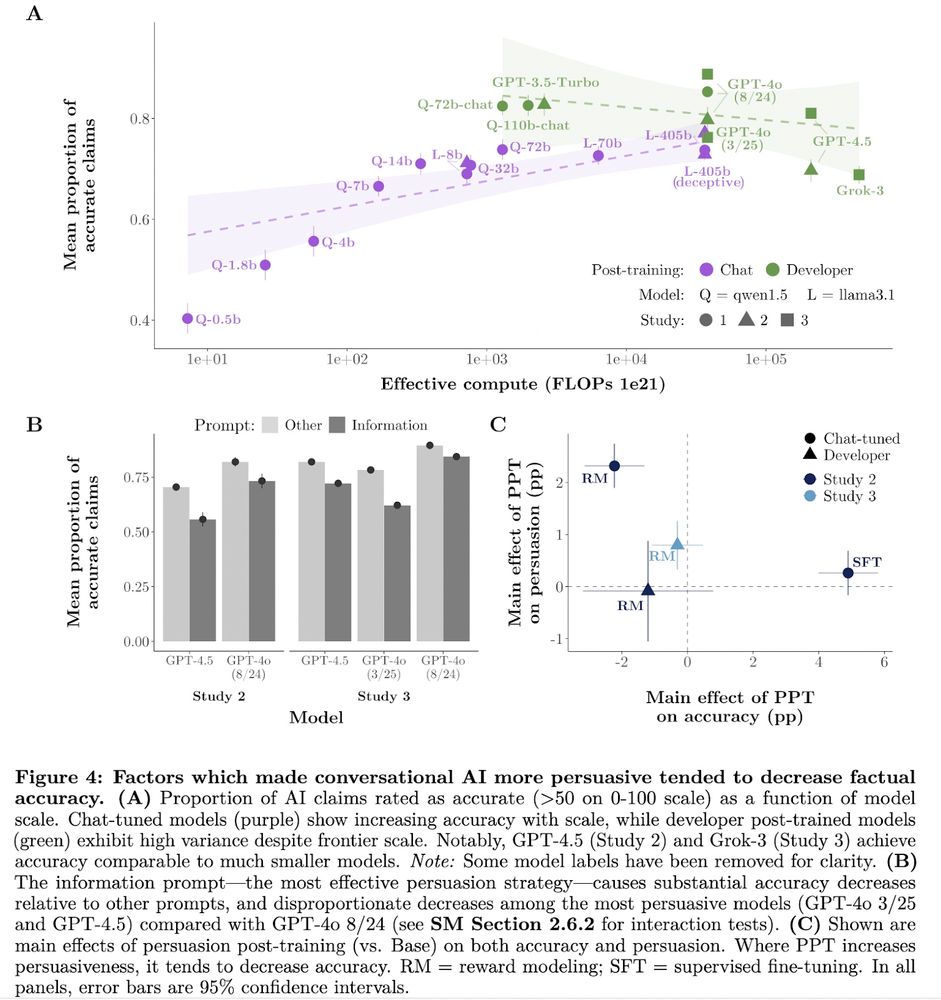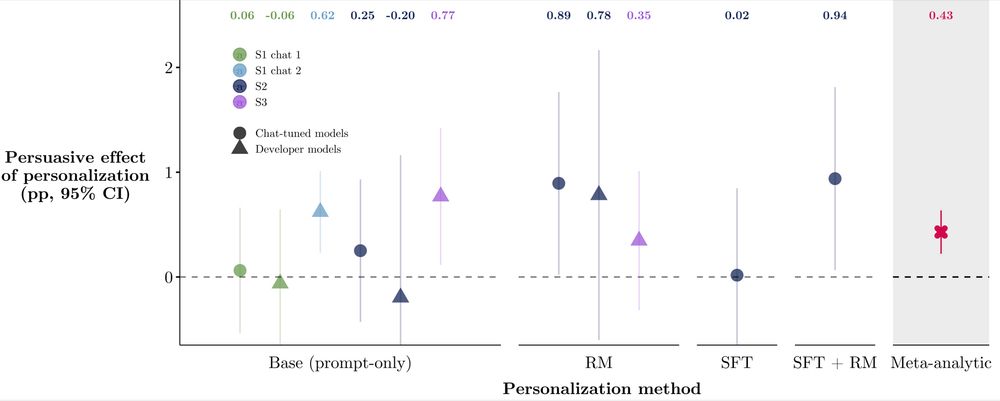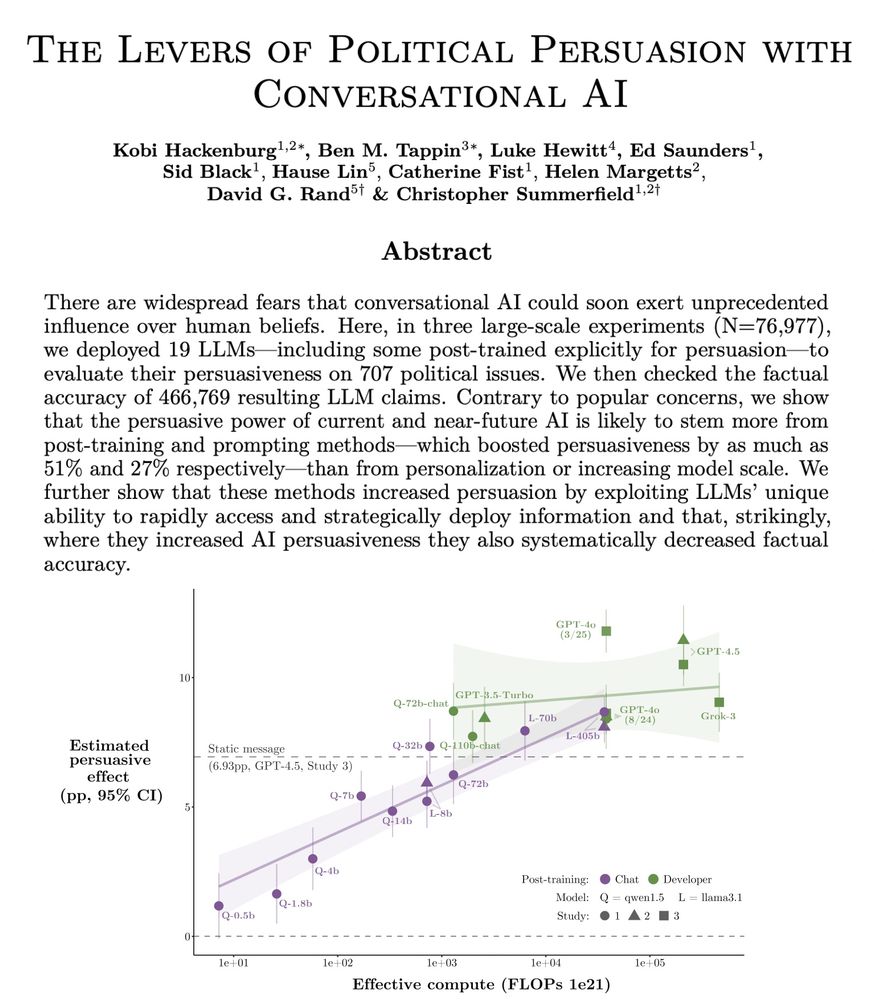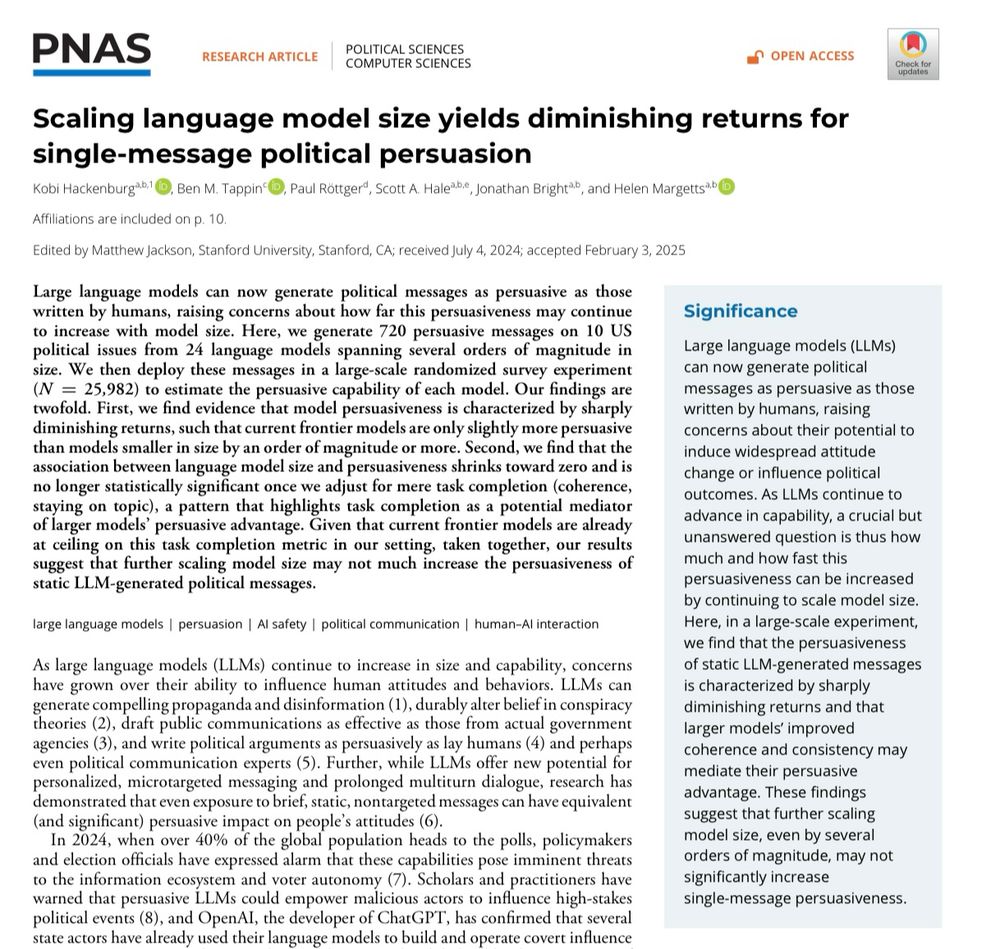
*️⃣Prompting the model with psychological persuasion strategies did worse than simply telling it to flood convo with info. Some strategies were worse than a basic “be as persuasive as you can” prompt.

*️⃣Prompting the model with psychological persuasion strategies did worse than simply telling it to flood convo with info. Some strategies were worse than a basic “be as persuasive as you can” prompt.
→ Prompting model to flood conversation with information (⬇️accuracy)
→ Persuasion post-training that worked best (⬇️accuracy)
→ Newer version of GPT-4o which was most persuasive (⬇️accuracy)

→ Prompting model to flood conversation with information (⬇️accuracy)
→ Persuasion post-training that worked best (⬇️accuracy)
→ Newer version of GPT-4o which was most persuasive (⬇️accuracy)
Models were most persuasive when flooding conversations with fact-checkable claims (+0.3pp per claim).
Strikingly, the persuasiveness of prompting/post-training techniques was strongly correlated with their impact on info density!

Models were most persuasive when flooding conversations with fact-checkable claims (+0.3pp per claim).
Strikingly, the persuasiveness of prompting/post-training techniques was strongly correlated with their impact on info density!
Despite fears of AI "microtargeting," personalization effects were small (+0.4pp on avg.).
Held for simple and sophisticated personalization; prompt-based, fine-tuning, and reward modeling (all <1pp).


Despite fears of AI "microtargeting," personalization effects were small (+0.4pp on avg.).
Held for simple and sophisticated personalization; prompt-based, fine-tuning, and reward modeling (all <1pp).
A llama3.1-8b model with PPT reached GPT-4o persuasiveness. (PPT also increased persuasiveness of larger models: llama3.1-405b (+2pp) and frontier (+0.6pp on avg.).)

A llama3.1-8b model with PPT reached GPT-4o persuasiveness. (PPT also increased persuasiveness of larger models: llama3.1-405b (+2pp) and frontier (+0.6pp on avg.).)
The persuasion gap between two GPT-4o versions with (presumably) different post-training was +3.5pp → larger than the predicted persuasion increase of a model 10x (or 100x!) the scale of GPT-4.5 (+1.6pp; +3.2pp).


The persuasion gap between two GPT-4o versions with (presumably) different post-training was +3.5pp → larger than the predicted persuasion increase of a model 10x (or 100x!) the scale of GPT-4.5 (+1.6pp; +3.2pp).
Larger models are more persuasive than smaller models (our estimate is +1.6pp per 10x scale increase).
Log-linear curve preferred over log-nonlinear.

Larger models are more persuasive than smaller models (our estimate is +1.6pp per 10x scale increase).
Log-linear curve preferred over log-nonlinear.
1️⃣Scale increases persuasion, +1.6pp per OOM
2️⃣Post-training more so, as much as +3.5pp
3️⃣Personalization less so, <1pp
4️⃣Information density drives persuasion gains
5️⃣Increasing persuasion decreased factual accuracy 🤯
6️⃣Convo > static, +40%




1️⃣Scale increases persuasion, +1.6pp per OOM
2️⃣Post-training more so, as much as +3.5pp
3️⃣Personalization less so, <1pp
4️⃣Information density drives persuasion gains
5️⃣Increasing persuasion decreased factual accuracy 🤯
6️⃣Convo > static, +40%
We examine “levers” of AI persuasion: model scale, post-training, prompting, personalization, & more!
🧵:

We examine “levers” of AI persuasion: model scale, post-training, prompting, personalization, & more!
🧵:


In a large pre-registered experiment (n=25,982), we find evidence that scaling the size of LLMs yields sharply diminishing persuasive returns for static political messages.
🧵:


In a large pre-registered experiment (n=25,982), we find evidence that scaling the size of LLMs yields sharply diminishing persuasive returns for static political messages.
🧵:

